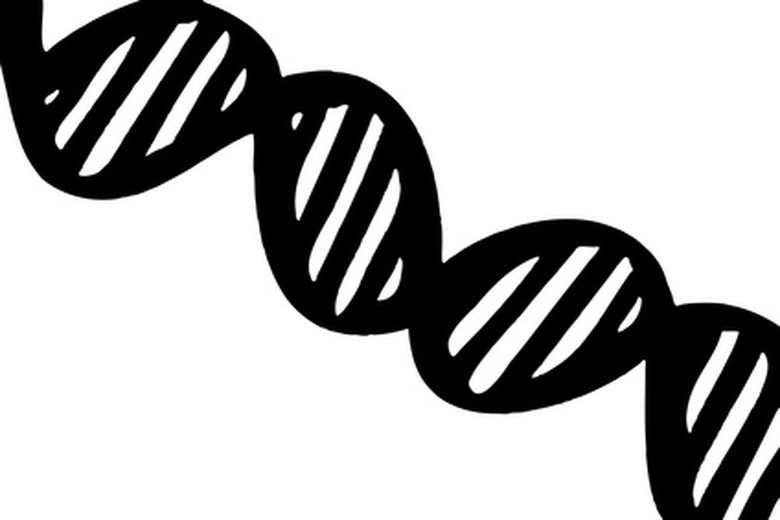What Kind Of Equipment Is Used To Analyze DNA?
DNA (deoxyribonucleic acid is the sum total of all inherited material in an organism. It consists of two intertwining strands known as a double helix, and base pairs bonded to each other. Adenine, for instance, bonds with thymine, and guanine bonds with cytosine. These base pairs are usually read within the cell in order to manufacture proteins, but scientists can also analyze and decipher the information.
DNA
DNA
Chromosomes are bundles of DNA tightly packed together. Different species have different numbers of chromosome pairs–humans have 23. Generally, each chromosome looks like an X, but in males the sex chromosome is an X and a smaller Y. A locus (plural is loci) is a position on the chromosome, and an allele is a variation of that trait in the locus. Each offspring is a recombination of DNA from the parents, so unique variations will result. By analyzing these small variations, scientists can identify individuals.
Identifying DNA
Identifying DNA
DNA testing identifies multiple loci in human DNA in order to scan for a match. Humans differ in about one-tenth of one percent in their DNA, which amounts to about three million base pairs (humans have three billion total), so highly variable regions need to be found. Cotton swabs are often used to collect samples because they reduce the risk of contamination, but any kind of fluid or tissue can be analyzed, which can come from any item or object.
Thermal Cycler
Thermal Cycler
Each technique may use different equipment. PCR (polymerase chain reaction), which is a popular technique, uses a thermal cycler, a device which holds a block of tubes containing PCR mixture, and which raises or lowers the temperature of the block in pre-programmed steps. This separates and then amplifies the DNA, which creates many copies of the strand. Even small or degraded samples can be analyzed using this method. However, then the DNA still needs to be tested.
DNA Probe
DNA Probe
In order to actually detect the specific nucleotide sequences, a DNA probe, tagged with a radioactive molecular marker for identification, can bind to a complimentary DNA sequence in the sample. This will create a distinctive pattern for each individual, which can then be matched to another sample. If more loci are utilized, then it is more likely that scientists will receive a match. Currently, about four to six probes are recommended. Beyond that, the time and expense required for testing increases sharply.
Electric Fields and Dyes
Electric Fields and Dyes
Another technique, known as short tandem repeat (STR), uses either gel electrophoresis or capillary electrophoresis after amplification. Both methods utilize an electric field in order to determine whether there are repeating sequences of DNA across 13 different loci. In order to see the sample, scientists may use silver staining, intercalating dye such as ethidium bromide, or fluorescent dyes. The odds that two individuals will have an exact match are about one in a billion, meaning that only about six or seven people in the entire world will have a match.
Cite This Article
MLA
Stutsman, Jacob. "What Kind Of Equipment Is Used To Analyze DNA?" sciencing.com, https://www.sciencing.com/kind-equipment-used-analyze-dna-6137001/. 24 April 2017.
APA
Stutsman, Jacob. (2017, April 24). What Kind Of Equipment Is Used To Analyze DNA?. sciencing.com. Retrieved from https://www.sciencing.com/kind-equipment-used-analyze-dna-6137001/
Chicago
Stutsman, Jacob. What Kind Of Equipment Is Used To Analyze DNA? last modified March 24, 2022. https://www.sciencing.com/kind-equipment-used-analyze-dna-6137001/
